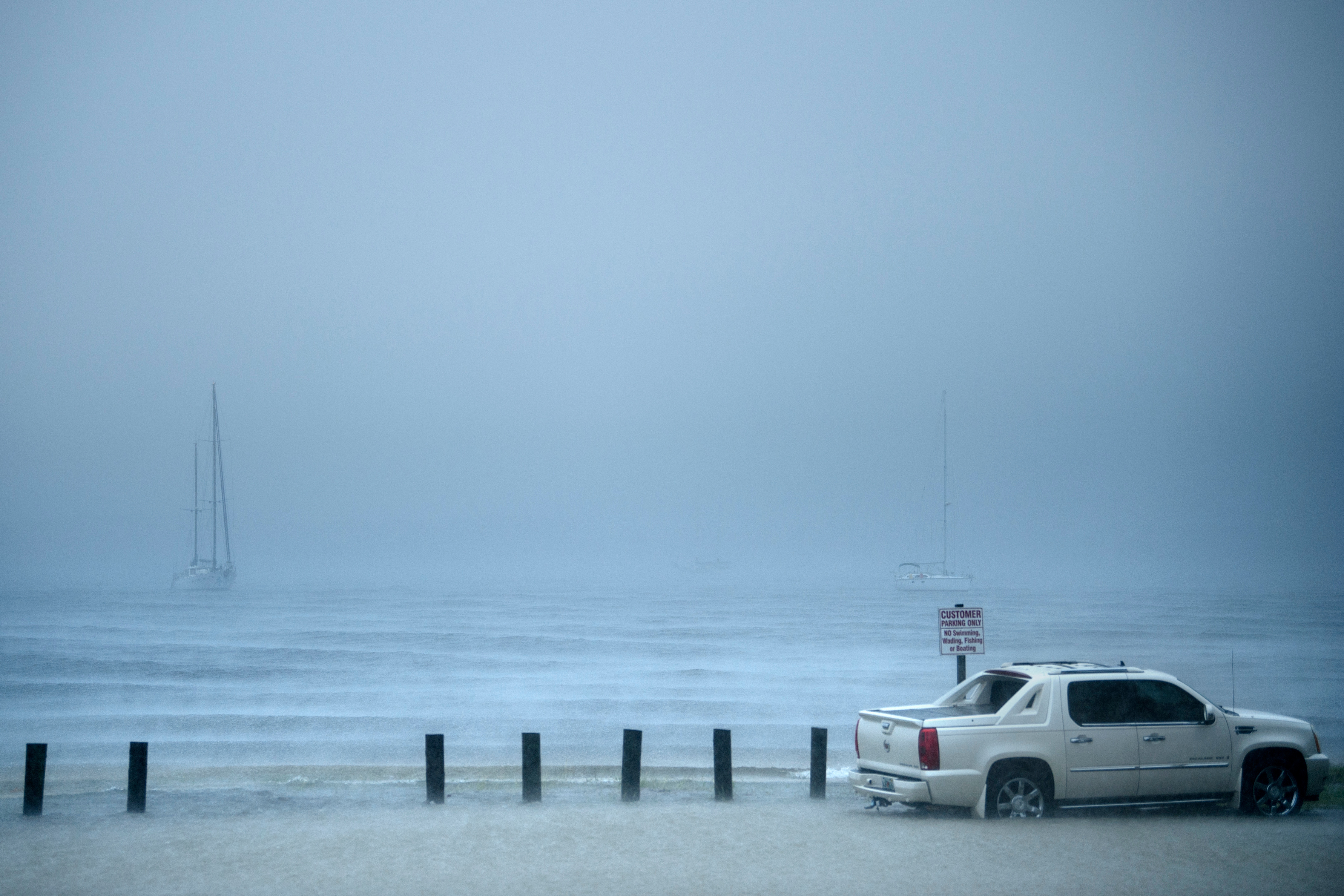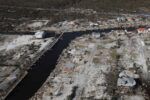Florida braces for ‘historic’ Category 4 hurricane
A car is seen in a deluged parking lot as Hurricane Michael begins to bring floodwaters into Panama City, Florida (Brendan Smialowski)
Panama City (United States) (AFP) – Hurricane Michael was on a collision course with the southern US state of Florida on Wednesday as weather forecasters warned that the Category 4 storm of historic intensity could be “incredibly catastrophic.”
Powerful winds, devastating storm surge and heavy rain were predicted for when Michael makes landfall later in the day in the Florida Panhandle, the finger-shaped strip of land along the Gulf of Mexico.
“Hurricane Michael is forecast to be the most destructive storm to hit the Florida Panhandle in a century,” Governor Rick Scott said. “Along our coast, communities are going to see unimaginable devastation.”
“The National Hurricane Center is expecting storm surge to be between nine and 13 feet (2.7-3.6 meters),” he added. “Water will come miles in shore and could easily rise over the roofs of houses.”
Hundreds of thousands of people were ordered to evacuate their homes and the governor told residents that if they have not already done so it was now too late.
“The time to evacuate the coastal areas has come and gone… Hunker down, and be careful,” he said. “Don’t go out in the middle of this. You are not going to survive it. It’s deadly.”
The NHC said top winds were swirling at 145 miles (230 kilometers) per hour and that Michael — a Category 4 storm on the five-level Saffir-Simpson Hurricane Wind Scale — could grow stronger still before slamming into the Panhandle in the early afternoon.
– ‘Historical’ –
At 11:00 am Eastern time (1500 GMT), Michael was about 60 miles (95 kms) south-southwest of Panama City and moving north-northeast at 14 miles per hour (22 kph), the NHC said.
“This is, unfortunately, a historical and incredibly dangerous and life-threatening situation,” NHC director Ken Graham said. “It’s going to be incredibly catastrophic.”
Brock Long, the head of the Federal Emergency Management Agency (FEMA), said many Florida buildings were not built to withstand a storm above the strength of a Category 3 hurricane.
“We’re going to see a lot of wind damage,” Long said, and some residents could expect not to have power restored for weeks.
“This is the final call for anybody that needs to get out,” he said. “Those who stick around to experience storm surge don’t typically live to tell about it unfortunately.”
Residents of the neighboring state of Georgia should also expect to be heavily impacted by the storm, the FEMA head said. “Citizens in Georgia need to wake up and pay attention,” Long said.
Mike Thomas, the mayor of Panama City Beach, a resort west of Panama City, said he expected there would be casualties and that emergency personnel would not go out when winds get over 50 miles per hour (80 kph).
“It’s going to be horrible,” Thomas told CNN. “We’re going to get some people hurt.”
An estimated 375,000 people in more than 20 counties were ordered or advised to evacuate.
The National Weather Service office in the state capital Tallahassee issued a dramatic appeal for people to comply with evacuation orders.
– ‘Leave NOW’ –
“Hurricane Michael is an unprecedented event and cannot be compared to any of our previous events. Do not risk your life, leave NOW if you were told to do so,” it said.
The NWS said it had found no record of any previous Category 4 hurricanes that made landfall in the Panhandle or the “Big Bend” coastal region.
“This situation has NEVER happened before,” it said on Twitter.
President Donald Trump issued an emergency declaration for Florida, freeing up federal funds for relief operations and providing the assistance of FEMA, which has more than 3,000 people on the ground.
State officials issued disaster declarations in Alabama and Georgia and the storm is also expected to bring heavy rainfall to North and South Carolina.
The Carolinas are still recovering from Hurricane Florence, which left dozens dead and is estimated to have caused billions of dollars in damage last month.
It made landfall on the coast as a Category 1 hurricane on September 14 and drenched some parts of the state with 40 inches (101 centimeters) of rain.
Last year saw a string of catastrophic storms batter the western Atlantic — including Irma, Maria and Harvey, which caused a record-equaling $125 billion in damage when it flooded the Houston metropolitan area.
Scientists have long warned that global warming will make storms more destructive, and some say the evidence for this may already be visible.
Disclaimer: This story has not been edited by Siliconeer and is published from a syndicated feed. Siliconeer does not assume any liability for the above story. Validity of the above story is for 7 Days from original date of publishing. Content copyright AFP.


